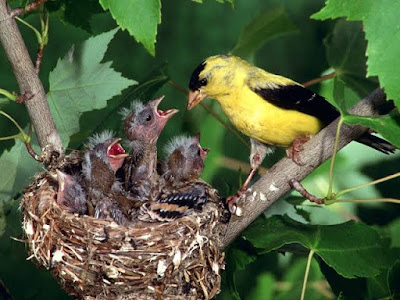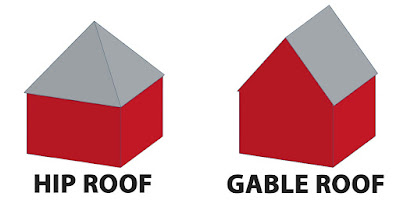In continuation with the earlier article on ‘the various stages in construction of a house’, after construction of walls and roofs, the next step is external finishes.
In this article we will be discussing on the external wall claddings and paintings which are a part of external finishing’s of a house
In PKC Realtors, we will give our clients the premium quality of paints at best affordable prices with a classy look of claddings as well.
Paints:
A fresh coat of house paint may seem like a money burning exercise, or superficial addition but when you think of the actual points there are some key benefits to painting your home’s exterior
Why does painting actually matter?
- Painting not only brings in aesthetic look but also has many functional advantages for a home
- Some of these will kick in immediately, improving your home’s qualities, while others accumulate over time as cost-saving measures
Listed below are the 7 important benefits of exterior house painting.
- Better Aesthetics:
- Don’t neglect the aesthetic value that house painting can bring
- You will see something newer and livelier every time you go out or come into your house and that goes beyond a simple color choice
- A fresh coat of paint can make your house seem newer and also putting your whole house in a different light
- Increased Home Value:
- The valuation of your house increases drastically when you go for exterior renovation especially painting
- Remodeling of your kitchens, bedrooms, halls will attract only a small RoI(80%) where as exterior paints will attract more than 140% returns as per industry standards
- Better appeal:
- If you’re interested in selling your home, exterior paint can greatly increase your potential curb appeal
- Appeal of a house is independent of both home value and personal appeal (though it’s related to those factors); instead, appeal is all about setting the right tone when a prospective buyer sees your home for the first time
- For a potential sale, if they like the appeal of the exterior, they’ll be far more likely to venture in for more details and stand a better chance of actually buying
- Increased protection against natural elements:
- Nature can be harsh on your house, anything can happen out of the blue
- Rain, wind, sleet, snow, insects and fire are just a handful of the natural elements that could potentially damage your house
- Right paint can resist nearly all of these(only to a certain extent)
- Think of paint as a protective, shield-like outer coating of your house
- It can prevent moisture from seeping into your home, preventing the outlandish costs of mold and mildew damage
- It gives an extra layer of protection against direct precipitation damage
- It can even stop insects from infesting your exterior
- Identification of insect damage:
- Speaking of insects, termite damage is a major killer for wood-based homes
- Being able to identify this problem and address it proactively is crucial if you want to save yourself some extremely expensive foundational repairs
- Evaluating your house before adding a fresh coat a paint can help you identify any possible insect damage early, and adding the paint itself can help stop an infestation in its tracks
- Increased lifespan:
- A new coat of exterior paint can help increase the lifespan of your house
- Most traditional forms of wall claddings, such as wood or vinyl, need to be replaced periodically to keep your house protected
- If new paint can add even a few years onto the lifespan of the wall claddings, you could end up saving lakhs on rupees in eventual expenses
- In addition, new paint can help you cover up or temporarily repair damage that your old wall cladding has sustained (do note that house painting is not a suitable substitute for siding replacement if it is in a very poor condition)
- Practical costs:
- To top it all off, house painting is one of the cheapest renovations you can make
- If you’re looking for a budget-friendly way to improve the value, appeal, and function of your house, go for it!
Hence it is understood that external paintings of a house are very much important and they shouldn’t be neglected.
Sidings or Claddings:
- Siding or wall cladding is the protective material attached to the exterior side of a wall of a house
- Along with the roof, it forms the first line of defense against the elements, most importantly sun, rain, snow, heat and cold, thus creating a stable, more comfortable environment on the interior side
- The siding material and style also can enhance or detract from the building's beauty
- There is a wide and expanding variety of materials to side with, both natural and artificial, each with its own benefits and drawbacks
The various types of claddings we use at PKC Realtors are-
- Timber Claddings:
- Timber cladding is a very popular cladding material, particularly around residential buildings
- It gives a very natural and aesthetic feel to a building exterior
- Concrete Claddings:
- Concrete cladding is usually considered as a material to be used in commercial buildings and is manufactured in the form of cladded tiles
- These tiles are cut in a limited number of shapes and they also take longer time to install therefore labour costs will be higher
- Concrete cladding tiles are very strong, durable and only require a very small amount of annual maintenance
- Fibre Cement Claddings:
- These are made up of a combination of cellular fibre, compressed sand, water and cement creating wet sheets
- Fibre cement cladding is a low cost cladding sheet
- It is very easy to install and can come in a variety of different colours
- Maintenance is not a big issue with this material as it only requires a small amount of annual cleaning
- Metal Claddings:
- Metal cladding is the most common cladding material used in commercial buildings
- Steel cladding is commonly used for commercial purposes as it is a strong, durable, low in maintenance and it is also very pleasing to the eye
- Aluminium cladding is also popular as it is very affordable, requires low maintenance and is easy to install on site
- Both steel, aluminium offer very low thermal insulation performance to a building
- Stone Claddings:
- Stone cladding is very popular when it comes to residential buildings
- It gives a real natural aesthetic feel to a building and is sometimes combined with another exterior finish or render to give a new dimension to the building
- Stone is a very good insulator and also durable material as it is able to withstand years of weathering making it a very popular exterior choice for residential buildings
- However, stone cladding can be a very expensive material to install and maintain
- Vinyl cladding system or Vinyl Siding
- Vinyl cladding/siding is predominately made for cladding the exterior faces of houses and other residential buildings
- Vinyl cladding comes in a variety of colours and patterns, and is also a cost-effective material as it reduces the cost of heating and cooling the living space that it is built on
- This material requires little or no maintenance and can withstand harsh weathering
- The major disadvantage with vinyl cladding is that, this material can cover up problems such as damp or other moisture problems which allows mould to grow
- Weatherboard Claddings:
- Weatherboard cladding is a common type of cladding used on residential building and can be carried out with a wide variety of materials like fibre cement and UPVC, and in a range of colours and effects
- It is an extremely durable method of cladding the exterior of a building and it can be applied to a variety of substrates
- Weatherboard cladding usually requires a thorough annual maintenance routine to be kept at best condition
Therefore these are the various type of sidings/claddings used by PKC Realtors for external finishings.
In the next part of this article, we will be discussing on the doors and windows of a house
For more information,
People can get in touch with me in LinkedIN, Facebook, Instagram
PK,
PKC Groups.





































